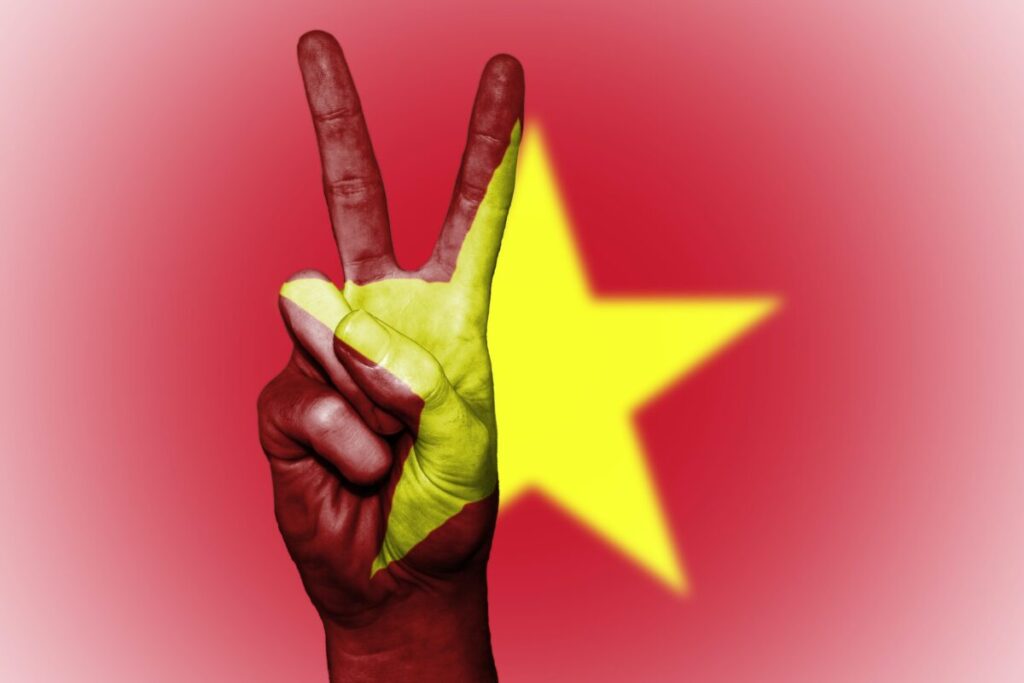VinFast, an Electric Vehicles (EVs) manufacturer, has recently slashed its leases by 50 percent for the first VF8 Eco Trim model deliveries to California. The automaker is part of the Vingroup, a Vietnamese multi-sector corporation focused on Tech & Industry, Trade & Services, and Social Enterprise. Although they announced in January that their VF8 would be available for lease at monthly 599 US dollars, their website shows $399. Moreover, for customers who have already made a deposit, the monthly payment will drop to $274. Therefore, discounts go between 33 and 54 percent, respectively.
This first wave of VinFast EVs is produced in Vietnam and exported to the US. However, the company has ambitious plans for the American market and will invest $4 billion in a North Carolina-based assembly factory.
The US and Vietnam relationships have not always been this civilized. Between 1965 and 1975 both countries waged a bloody war in South East Asia. At the end of the conflict, in which Vietnam was unified under the soberany of the Communist government in Hanoi, the population had little to celebrate. By then, Vietnam was one of the poorest countries in the world. What is more, in the eighties, its GDP per capita was slightly north of $200.
The situation has dramatically improved, however. The World Bank noticed that the Asian country has propelled “from being one of the world’s poorest nations to a middle-income economy in one generation.” Vietnam’s GDP has averaged 6.2 percent growth per year since 2000. In 2022, Vietnam’s economy grew 8.02%, the fastest annual pace since 1997, and it is projected to continue to do so through 2027. Poverty rates declined from 14 in 2010 to 3.8 percent in 2020.
Nowadays, Vietnam and the US have a significant trading relationship, with the US being Vietnam’s second-largest trading partner following China, and Vietnam ranking among the top ten US trading partners. Over the period between 2016 and 2021, the two-way trade turnover between the two countries has more than doubled. Additionally, the US is among the top investors in Vietnam.
Many questions arise. What is behind the remarkable shift? How could two former foes turn into business partners and friends? And at the same time, how was Vietnam able to turn the tide and improve its social and economic situation so much? The answer, of course, is globalization.
By the second half of the eighties, the centrally planned economic model was exhausted. The Vietnamese government recognized this fact and put forward a set of market-friendly reforms. With the fall of the Berlin wall and the opening of Central and Eastern Europe as well as parts of Asia, the improvement of the diplomatic and commercial relationships between the US and Vietnam gained momentum. Thus, in 1991, the Bush (Sr) Administration presented Hanoi with a “roadmap” plan for phased normalization of ties which culminated in 1994 with President Clinton lifting the US trade embargo and signing a consular agreement.
A 2016 YouGov study surveyed more than 20,000 people across 19 countries on the following question: “Overall, do you think globalization is a force for good or bad for the world?” While in France good and bad tied in 37 percent (with 26 percent replying they didn’t know), in Vietnam a mind-boggling 91 percent said globalization was something positive.
The Vietnamese people know very well that globalization brings not only economic prosperity but also peaceful relations among nations. As a matter of fact, evidence points in the direction of a link between peace and trade. Along these lines, the monumental study by Jong-Wha Lee and Ju Hyun Pyun finds a strong correlation between trade and peace. Their empirical assessment of trade relationships between pairs of countries from 1950 to 2000 “shows that an increase in bilateral trade interdependence and global trade integration significantly promotes peace between countries… Bilateral trade interdependence promotes peace more significantly for contiguous countries, whereas global trade openness contributes more to peace between distant countries.”
Vietnam’s economic miracle is inextricably intertwined with trade and peace. In other words, with the fruits of globalization. Sebastian Eckardt, Deepak Mishra, and Viet Tuan Dinh summarize the lessons we can learn from Vietnam’s success in an article published by The Brookings Institution:
“First, it has embraced trade liberalization with gusto. Second, it has complemented external liberalization with domestic reforms through deregulation and lowering the cost of doing business. Finally, Vietnam has invested heavily in human and physical capital, predominantly through public investments. These lessons—global integration, domestic liberalization, and investing in people and infrastructure—while not new, need reiteration in the wake of rising economic nationalism and anti-globalization sentiments.”
Despite the naysayers, the fact that a Vietnamese company is at present offering half-priced EVs to Californians is an uplifting parable of globalization.
* Federico N. Fernández is Executive Director at Somos Innovación (a Latin American pro-innovation alliance) and CEO at We Are Innovation (Somos Innovación’s sister organization for Europe). Federico is Founder and President of Fundación Internacional Bases (Rosario, Argentina) and also the Chairman of the Organizing Committee of the International Conference “The Austrian School of Economics in the 21st Century,” which takes place in Europe and LatAm alternatively.
Source: We Are Innovation




